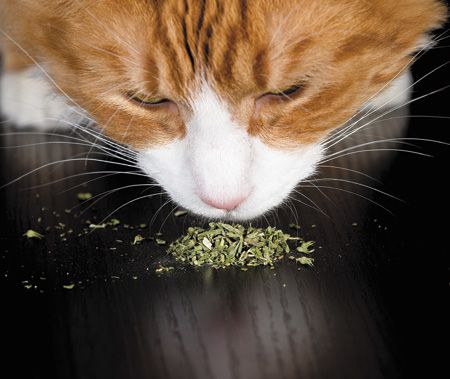Journal Scan: Olfactory enrichment for catsdigging deeper than catnip
Some cats dont respond to catnip, but this study suggests there are other options for veterinary clients to try.

Shutterstock.com
Cats have long been known to respond to olfactory stimulation. Catnip, in particular, is known to cause a euphoric-like reaction in cats large and small. This has, in turn, been used to provide environmental enrichment for cats, especially those in an indoor-only setting. However, it is also well-known that about one-third of domestic cats as well as most tigers don't respond to catnip. Other plants such as silver vine, Tatarian honeysuckle and valerian root have been proposed to cause a similar effect in cats. The authors examined these three plants in comparison to catnip for both the response of domestic cats as well as similarities in potential active chemical compounds present.
Seeding the environment
One hundred domestic cats were exposed to powdered/ground silver vine, Tatarian honeysuckle, valerian root and catnip and monitored for response. The material was presented in their normal living environment at least five times in a randomized order, and a minimum five-minute washout period was observed to avoid cross-contamination of scents. The cats were observed for the following behaviors commonly associated with catnip: sniffing, licking, head shaking, chin rubbing, cheek rubbing, rolling on back, raking/bunny kicking, drooling and undulation of skin on back. Samples from each of the four plants were also analyzed by gas chromatography and mass spectrometry for five known or suggested active compounds that cause these effects.
Sniffing out results
Cats responded significantly to all four plants: 79% of cats responded to silver vine, 68% to catnip, 53% to Tatarian honeysuckle, and 47% to valerian root. No sex-related predispositions were found, but younger cats were associated with more intense responses. Significantly varying levels of the five tested compounds were found in the samples of the four plants.
Take-home points
All four plants showed significant reactions from domestic cats, with silver vine being most similar to and perhaps more reactive than catnip. Results of the chemical analysis were inconclusive, likely due to poor understanding of exactly what compounds and mechanism of action cause the euphoric-like reaction. The take-home message is that there are other options for olfactory stimulation besides catnip and that if a cat doesn't respond to catnip, it may respond to one of these others.
Bol S, Caspers J, Buckingham L, et al. Responsiveness of cats (Felidae) to silver vine (Actinidia polygama), Tatarian honeysuckle (Lonicera tatarica), valerian (Valeriana officinalis), and catnip (Nepeta cataria). BMC Vet Res 2017;13(1):70.
Link to abstract: https://www.ncbi.nlm.nih.gov/pubmed/28302120
Dr. Michael Nappier is an assistant professor of community practice in the Department of Small Animal Clinical Sciences at the Virginia-Maryland College of Veterinary Medicine in Blacksburg, Virginia.